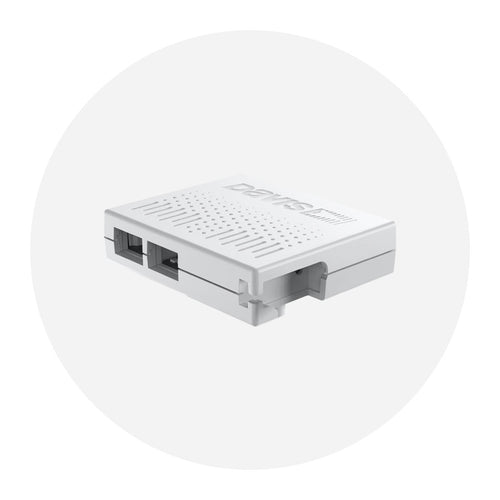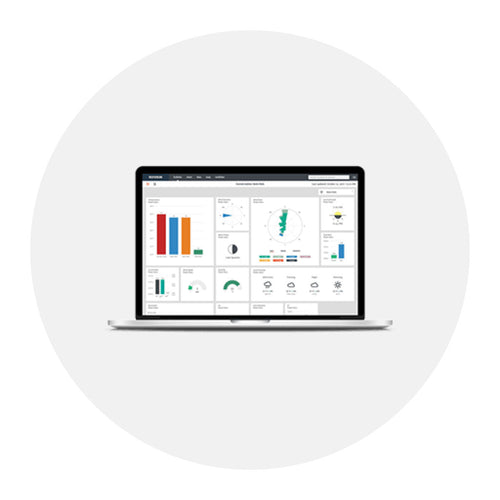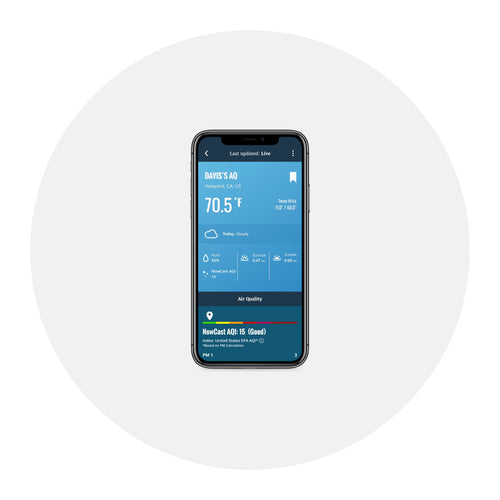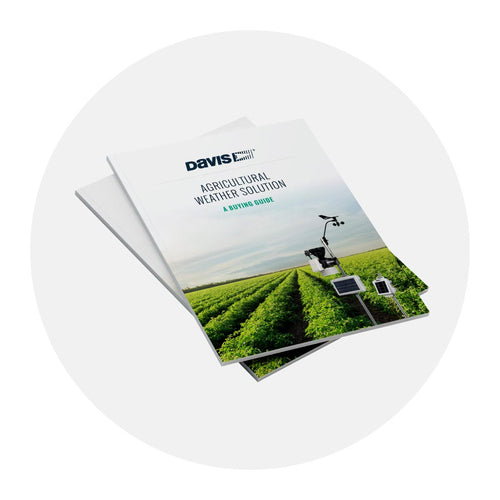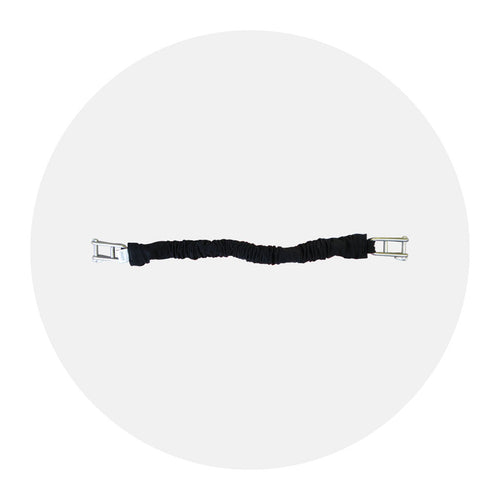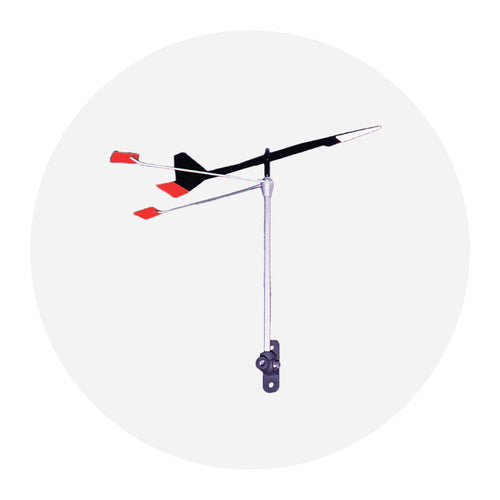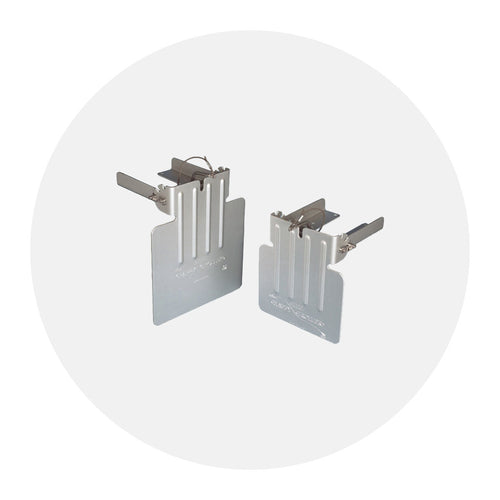
Davis Partners In Unique Groundwater Recharging Research Project
Last month our Davis Instruments team was happy to get our boots muddy by partnering with Fresno State University in an important research project to expand farmers’ ability to recharge vital groundwater. Our EnviroMonitor system will give the researchers the data they need to determine the effectiveness of a system that allows farmers to recharge the groundwater without interrupting farm activities.
In California’s Central Valley, the “food basket of the world,” farmers are facing another year where the word “water” is always on their mind.
When farming began to boom in the fertile, sunny, and vast Central Valley, water from rain and snowpack was dependable. The valley was home to the largest freshwater lake west of the Mississippi, Tulare Lake. But today, climate change, droughts, and the ever-growing demand for fruits, nuts, vegetables, and cereals have led to serious issues with water.
We’ve drained Tulare Lake and built hundreds of miles of canals and aqueducts to irrigate 5 million acres of farmland and provide water for 4 million residents in eight valley counties. Today, much of the water used to irrigate those acres and provide drinking water comes from groundwater. According to the USGS, about 20% of the nation’s groundwater demand is in California’s Central Valley; it is the second-most pumped aquifer system in the U.S.
The pressure has been mounting for farmers in the Valley for years, but the drought of 2012 – 2016 intensified it even more. State and federal water supplies were cut off, forcing farmers to turn to watering from aquifers – water stored both naturally and intentionally underground. Accelerated pumping caused dry wells and the land to actually sink – sections of the 400-mile long California Aqueduct dropped more than two feet. Over-pumping the groundwater also led to contamination of the water that was left with nitrate and salts.
In 2014, lawmakers recognized the need to act quickly to improve groundwater supplies by passing the Sustainable Groundwater Management Act, with the goal of replenishing and sustaining California’s groundwater by 2040.
In California, and many other places, groundwater has become Ground Zero.
Davis Instruments was happy to partner with an exciting research project aimed at allowing growers to recharge their groundwater without interrupting normal farm operations. The project, the Subsurface Artificial Groundwater Recharge System, is the being led by Cordie Qualle, Fresno State civil engineering professor and Interim Director of the California Water Institute.

Davis's Ag Sales Manager, Kaylan Pollard, with Fresno State Engineering faculty member Cordie Qualle at the the groundwater aquifer recharge research project at FSU's almond orchard. Photo by Geoff Thurner, Copyright 2021.
Qualle knows how urgent the need is to recharge groundwater. 125 million acre-feet of water has been taken out of Central Valley groundwater aquifers in past century; 20 million in just the past decade.
California’s drought conditions have created scenarios where farmers can’t count on rainfall or even snowpack to create irrigation water. They can count on sudden storms, “big gulps,” where lots of rain falls and drains into the rivers and out to the delta and eventually to the Pacific Ocean - water lost to these farmers. Growers in the Central Valley know they must try to save whatever water they can to recharge the aquifers for later use. They have normally done this by using precious land resource for canals, basins, and ponds to add to natural aquifer rechargers like rivers, lakes, and floodwaters. They’ve used their fields during non-growing seasons as recharge sources by flooding them. They’ve injected water into wells and even imported and recycled water to recharge the aquifers.
But Qualle asked, “Can growers recharge aquifers, year-round, using their working fields and orchards without impacting farm activities?”

Installing deep Sentek sensors in the Fresno State University groundwater aquifer research project requires a big drill. Photo by Geoff Thurner, Copyright 2021.
Qualle’s research is focused on the installation of a system of leach lines -- perforated pipes -- laid deep beneath growing crops, into which water, filtered to remove salts and prevent clogging, can be pumped from canals.
"Glenn Down at LIDCO has been installing these systems for a few years now. We decided to do the science around that technology," Qualle said. “It's an exciting idea, because it opens the use of agricultural land for recharging, unlike basins that tie up the land.”
“This is not subsurface irrigation,” he said. “The leach lines are much deeper than the roots of the crop. In our test almond orchard, the lines are at about 10 feet, and the tree roots are about 4 – 5 feet deep. The intent is to get the water into the ground water, rather than let it evaporate or flow on the surface to rivers.”

The team, including Cordie Qualle, FSU Engineering grad student Gabriela Boniia, MSCE grad student Mary Church, Davis's Kaylan Pollard, Sentek's Gill Costa, and Josh Shedden, installing soil moisture sensors at FSU's groundwater aquifer recharge research project. Photo by Geoff Thurner, Copyright 2021.
In October, three leach lines were laid in two adjacent rows about 20’ apart in the test almond orchard at Fresno State University. Sentek moisture sensors extend 30’ down, at 2.5-foot intervals. The sensors are mounted in EnviroMonitor Nodes and report to a Cellular Gateway. The research team uses the WeatherLink API system to capture their data for analysis. The allows the team to see how the water moves and how saturated the soil is at that depth.
“The goal is to be able to look at how the water moves; how much we put in and how much is recharged,” Qualle said.
“This is not a quick process,” he reminded us. “It will take weeks, even years, for the water to reach the water table that is 70 or 80 feet deep, and then move laterally toward the well. Recharge has to happen 24/7, year in and year out. But water, while a property right, is really a community resource. The goal is to recharge the aquifers.”
The advantages to growers include the ability to use their land for growing and recharging at the same time. It can be installed anywhere without disturbing the surface. It is economically feasible, while the loss of groundwater and failure to comply with water conservation regulations can make “doing things like we always have” turn into economic disaster.
Davis’s own Kaylan Pollard was on hand to help with the installation.


Davis's Agricultural Sales Manager, Kaylan Pollard, is not afraid to get her boots (and fingernails) muddy. Above, she checks the Sentek sensor's level; below, she helps Sentek's Gill Costa install it in an EnviroMonitor Node. Photos by Geoff Thurner, Copyright 2021.
“Kaylan was great,” Qualle recalled. “She knows her stuff. All the Davis team was just great. Any problems we encountered, the guys in Hayward quickly solved. Davis is the best partner ever!”
“It was great to show everyone how easy it is to install an EnviroMonitor system,” Kaylan said. “This was a very specific use of soil moisture sensors, and much deeper than we normally see them installed. But because EnviroMonitor is so easy to customize, being unique is no problem. Every installation is unique – that’s the nature of farming. We designed EnviroMonitor to do what each unique user wants it to do.”
Fresno State civil engineering grad student Gabriella Bonilla was integral to getting the project funded. She helped write a $50,000 grant that was matched with $25,000 from donors. Partners like Davis, LIDCO Inc, CalWest Rain, Grundfos Pumps, RedTrac, the City of Clovis, Moor Twining Associates, Fresno State Farm, and the Agriculture Research Institute all jumped at the chance to help out.
We are very proud to be part of this project. Since globally ground water comprises 30% of the world’s fresh water, with another 69% tied up in in ice caps and mountain snow/glaciers, groundwater is going to be the key to a future where freshwater is available for crops, animal agricultural, and human consumption. We are happy to help our great state of California lead the world in developing ways to recharge and sustain groundwater.
Read more in this story by Rebecca Wass in the Fresno State Magazine.
In the face of escalating environmental risks, AEM is the essential source for insights on weather, climate, lightning, floods, wildfires, water management, and more.
Learn more about AEM and all of our solutions here.







